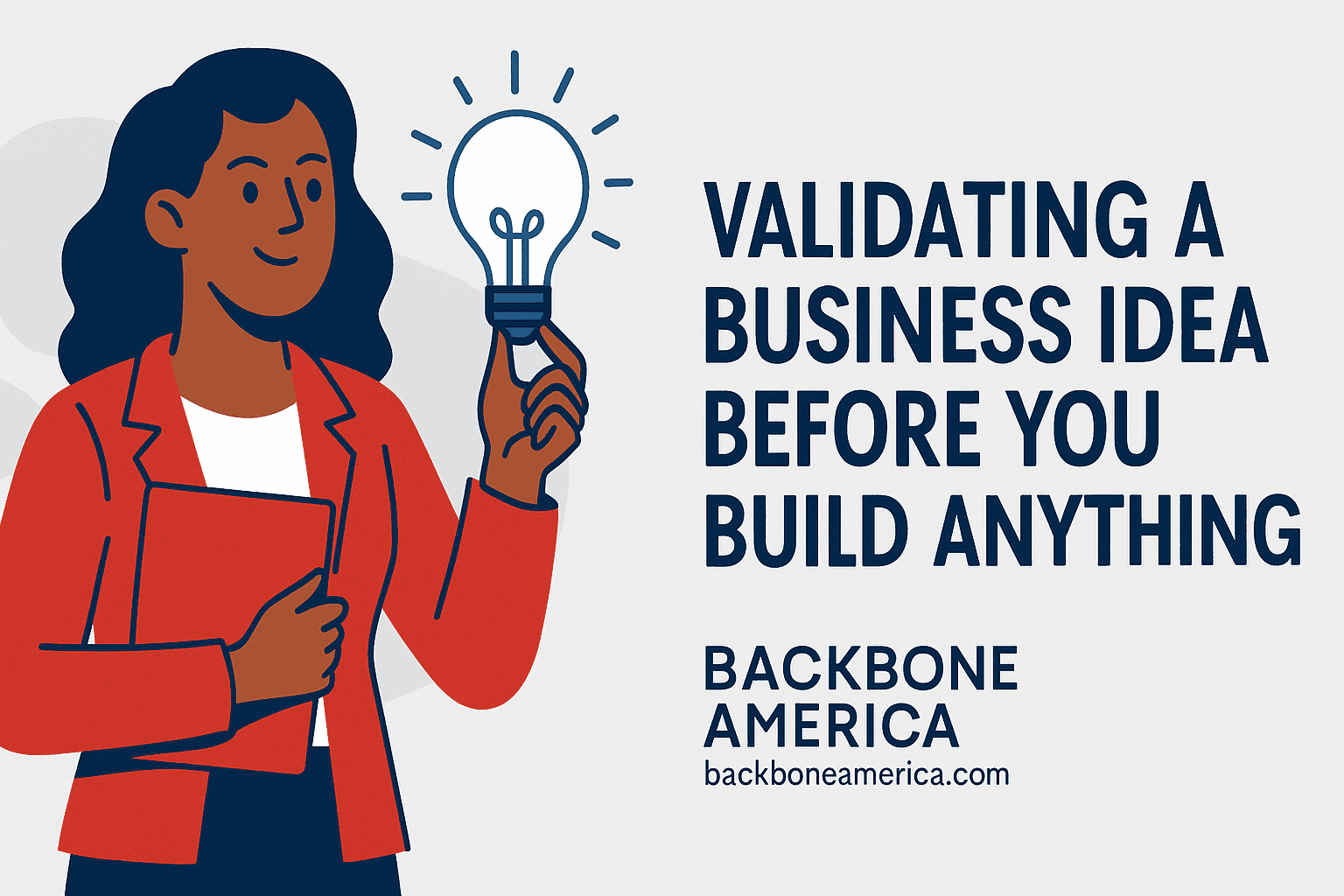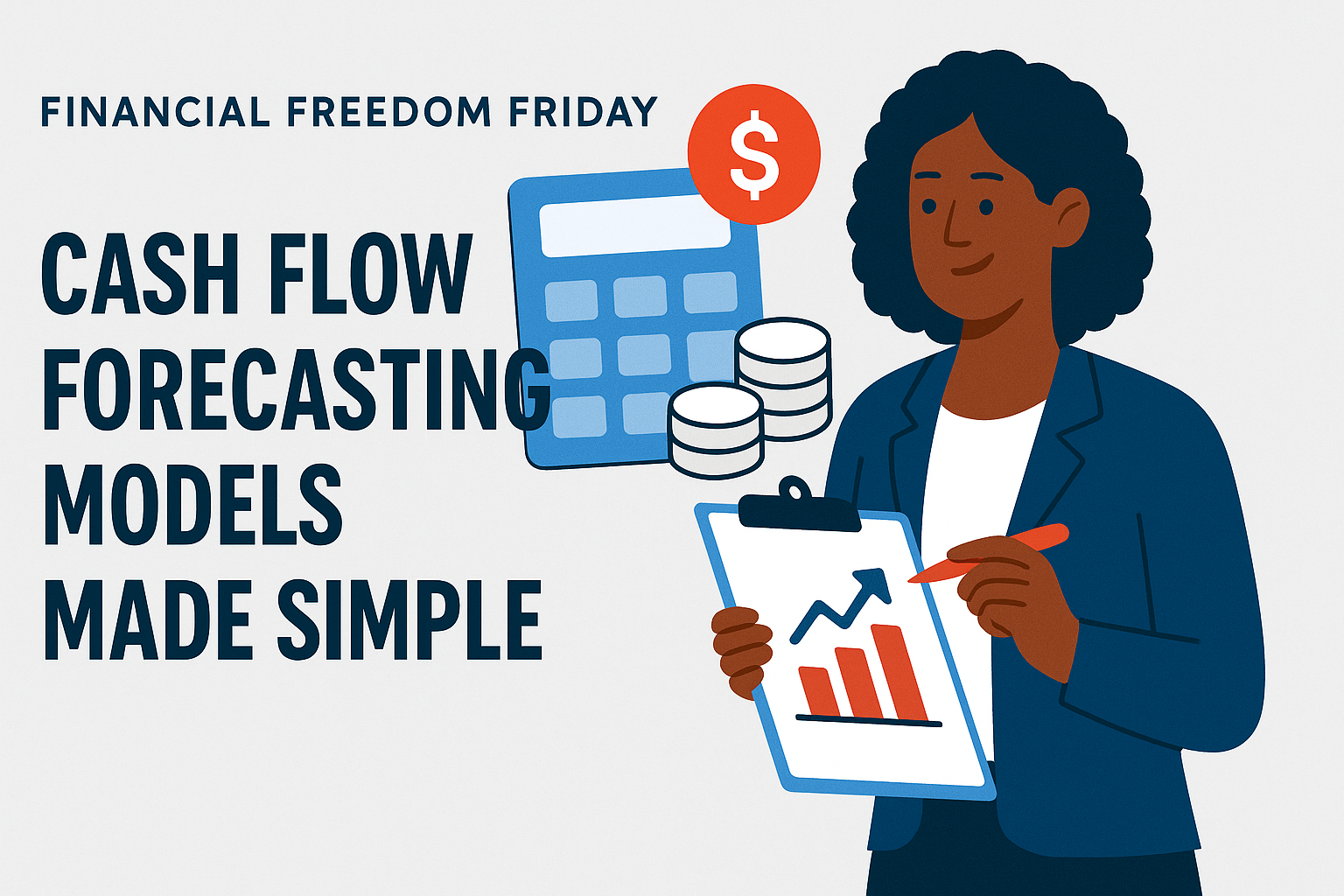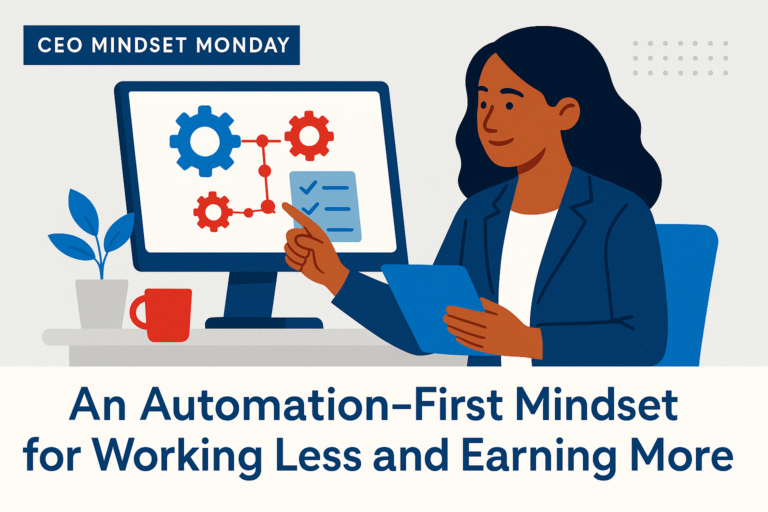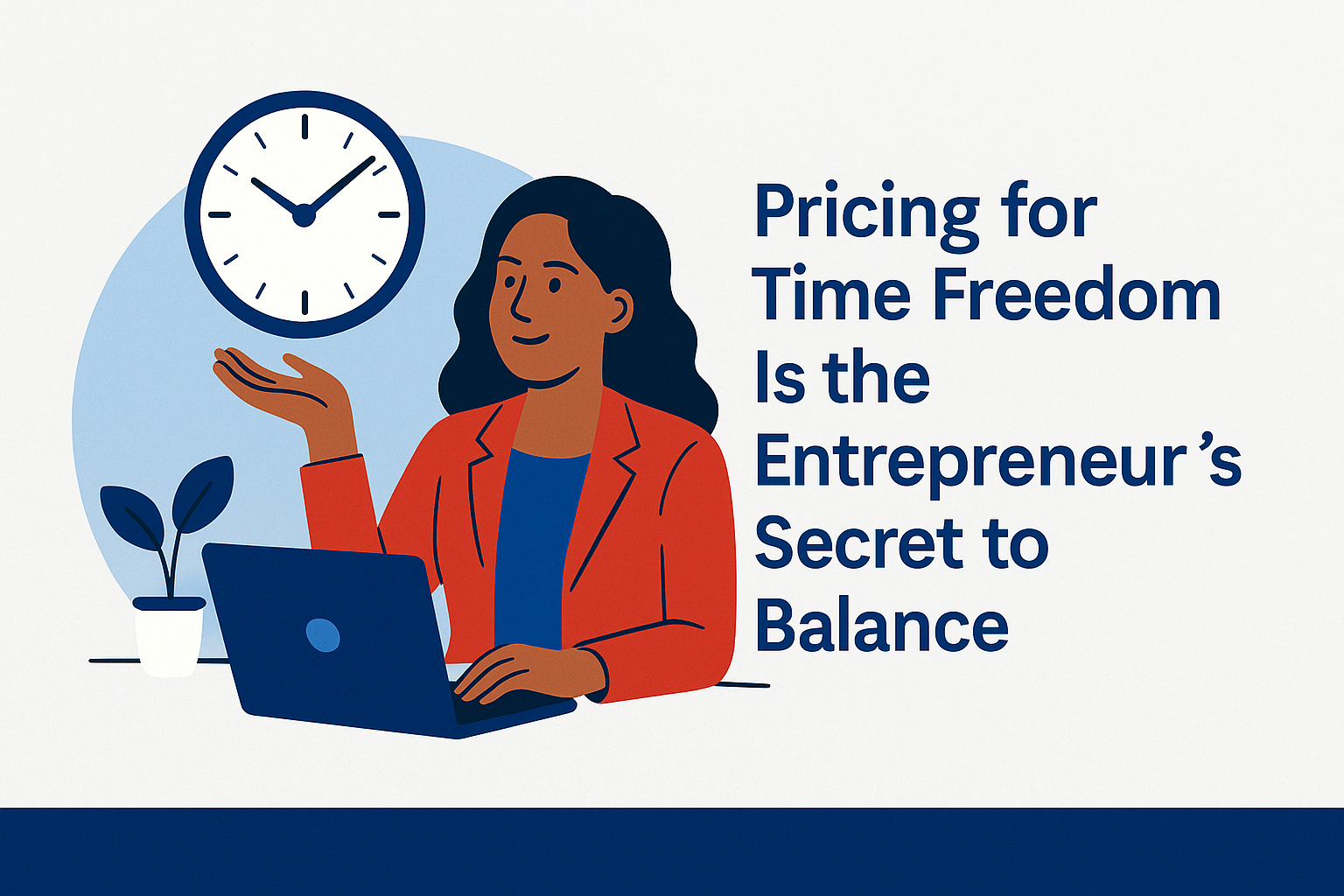Financial Freedom Friday
You’ve been running your business for six months. You’ve poured in late nights, skipped weekends, pushed past doubt. But your bank account still hasn’t caught up. No paycheck. No profit. And without that income, you might be wondering if you’ve built anything at all—if equity in a business only counts once the money shows up.
So… does that mean you’ve gained nothing?
Not even close.
Even when you’re not earning a regular salary, you can still be building something powerful—equity in a business. That’s the part most people overlook. Especially those of us starting from a place of stability—still employed, still cautious, still calculating every move.
But equity is what makes the effort worth it.
It’s the long-term reward of entrepreneurship. It’s how your unpaid hours today can turn into real value tomorrow. And whether or not you’ve thought about it this way, the moment you invest in your business—your time, your money, your energy—you’ve started building equity.
So let’s answer the real question:
How do you build equity in a business?
What Is Equity in a Business?

If you’ve put in $5,000 of your own money, built out a brand, created systems, and haven’t taken on any debt? That ownership has value—even if it’s not liquid. That’s equity.
And no, it’s not the same as cash. You can’t swipe it at the grocery store. But equity reflects ownership. It’s what makes a business yours. It represents the portion of the business that belongs to you, and it grows as the business grows.
Depending on your business structure, equity can show up differently:
Sole proprietorship: You and the business are legally the same, so equity is simply what the business owns minus what it owes—your net ownership.
LLC (Limited Liability Company): Equity is divided into “member shares” or ownership percentages. Your sweat and capital contributions define your stake.
Corporation: Equity is measured in stock or shares. Even if you’re the only shareholder, your ownership is formalized and legally recognized.
The key takeaway? If you’re building a business, you’re building equity—even if no one’s paying you (yet).
I remember those early months with Backbone America. I wasn’t drawing a salary. I didn’t even have consistent revenue. But I was laying a foundation. Every blog post I wrote, every system I set up, every course I developed—that was equity.
Why Building Equity Matters
When you’re not paying yourself yet, it’s easy to wonder if your business is even “real.” But here’s the truth: every hour you put in, every dollar you contribute, every system you build—those things accumulate. They don’t disappear just because you haven’t cashed a check.
Equity is how that effort translates into long-term value.
It’s the foundation of your net worth as an entrepreneur. And it matters because:
It builds financial leverage. Lenders, investors, and even potential partners often look at your equity to determine how viable and stable your business is.
It creates future options. You can draw from it, borrow against it, or sell it. You’re not stuck trading time for money forever.
It’s transferable. If you bring on a partner, raise capital, or even plan an exit—your equity position is what determines your share of the pie.
And then there’s sweat equity.
I didn’t need to “learn” what sweat equity was—I helped clients assign value to it all the time at the SBDC. But living it? That’s different. It’s one thing to create spreadsheets showing how founder contributions grow over time. It’s another thing to watch your bank balance dip while you build something that doesn’t pay you yet. You know it’s valuable. You just can’t always feel it.
Still, that unpaid work matters. Because if the business grows, that work becomes part of its value. That’s the kind of payoff most people don’t see coming—until it’s staring them in the face in the form of a valuation or a sale offer.
Equity gives your effort permanence.
How to Build Equity in a Business
Equity doesn’t just happen—it’s built. Brick by brick. Decision by decision. And if you’re doing the work now with an eye on long-term ownership, here’s how you intentionally grow equity in your business.
Invest Time (Sweat Equity)
If you’re not paying yourself yet, your time still has value. That’s sweat equity—and it’s legitimate.
Start tracking it.
Keep a log of the hours you’re putting in. Assign a dollar value to that time, even if it’s just for your own records. You’re not pretending to pay yourself—you’re documenting your contribution. Need a place to start? You can download our free Equity Tracker Template to help quantify it.
Contribute Capital

In your accounting system, log those payments as capital contributions. Don’t confuse them with a personal loan to the business (unless you’re structuring it that way intentionally). Owner capital builds equity. Loans add debt.
When I revived Backbone America, I funded the initial tools and setup out of pocket. I treated it as owner’s equity—not a loan—because I wasn’t expecting repayment. I was investing in something I intended to own.
Retain Profits
Once your business becomes profitable, you’ll have a choice: take money out, or leave some in.
What you reinvest becomes retained earnings—and those earnings increase your equity. They’re the difference between growing a stable business and just hustling for a paycheck.
It’s not about hoarding cash. It’s about building a financial base that can support bigger moves later.
Increase Business Valuation
Equity isn’t only about what you put in—it’s also about what the business becomes.
As your business gains value—through brand recognition, intellectual property, recurring revenue, systems, and client relationships—your equity grows with it.
That’s why building assets like an automated email funnel, a signature program, or documented SOPs isn’t just about efficiency. It’s about making the business more valuable, with or without you in it.
Formalize Agreements
If you’re in business with others, equity must be clear and documented. That means:
Operating agreements (for LLCs)
Partnership agreements
Vesting schedules (especially for sweat equity)
Clarity upfront avoids confusion—and protects what you’re building.
Even if you’re a solo founder now, setting this structure early can make it easier to bring on partners, sell, or raise capital later.
How to Track Your Equity
Equity might be intangible, but that doesn’t mean it should be invisible. If you’re building it, track it. It’s one of the most empowering habits you can build as a founder—especially when your business isn’t paying you yet. Because even if the cash isn’t coming in, the value is still being created.
What to Track

Capital Contributions
Any personal money you put into the business—whether it’s $50 or $5,000—should be logged as owner equity. Keep receipts, and use your accounting software (or a simple spreadsheet) to assign it correctly.Sweat Equity
If you’re not paying yourself yet, your time still counts. Track your hours. Assign a fair hourly rate. This doesn’t just create a record—it helps you understand what the business owes you in value, even if there’s no paycheck (yet).Retained Earnings
When the business earns money and you don’t withdraw it, that profit stays in the business—and boosts your equity. These reinvested earnings are part of your ownership stake. Keep them visible.
Tools You Can Use
You don’t need fancy software to start tracking equity—but consistency matters.
Here are a few solid options:
Zoho Books – My go-to for small business accounting. You can categorize owner contributions, track retained earnings, and generate equity reports over time.
QuickBooks – Widely used and flexible, with equity tracking baked in.
Excel or Google Sheets – Ideal for early-stage founders. (Use formulas to sum up hours, contributions, and earnings over time.)
Even if you’re the only one looking at these numbers, don’t underestimate the confidence that comes from seeing them grow.
What Can You Do With Equity?
If you’re building equity, you’re not just stacking numbers on a spreadsheet—you’re creating leverage. You’re giving yourself options. And eventually, you’ll want to use that equity in ways that move your business—and your life—forward.
Here’s how that plays out in real terms:
Build Creditworthiness
When lenders or investors look at your business, they want to see skin in the game. Equity shows you’ve put something in—and that you’ve built value beyond just revenue. A solid equity position can improve your chances of qualifying for funding, especially if you’re reinvesting profits instead of draining them.
Secure Funding
Your equity stake can be used to attract investors or negotiate loans. Even if you’re not seeking outside money now, the groundwork you lay today gives you more control later. A business with a strong equity position is more appealing and often more fundable.
Sell or Transfer Ownership
Equity makes ownership transferable. Whether you bring on a partner, sell a portion of your business, or exit completely, your equity defines your piece of the pie. That’s why tracking it—and protecting it—matters so much.
I’ve seen too many founders wing it in the early years, only to find themselves tangled in confusion later when money, partners, or opportunities show up. Clarity around equity gives you negotiating power.
Plan Your Exit Strategy
Even if you’re not thinking about selling now, one day you might. And when that day comes, equity becomes your launchpad. The stronger your ownership position—and the more valuable your business—the more freedom you’ll have to choose how and when to exit.
Final Thoughts: Building Equity Is Building Freedom
Equity isn’t just accounting. It’s not just “nice to track.” It’s evidence that your business matters—that it has value, even if that value hasn’t hit your personal bank account yet.
It’s also one of the most misunderstood parts of entrepreneurship. Especially for those of us building something slow, steady, and strategic while still working a full-time job. The world tends to reward speed and splashy growth. But equity rewards consistency. Vision. And patience.
If you’re not paying yourself yet, you’re still not working for free—as long as you’re building equity on purpose.
So track it. Protect it. Grow it.
That spreadsheet you update at the end of each month? That’s your receipt. It’s your proof. It’s your reminder that this business owes you something—not because of entitlement, but because of investment. You’ve been showing up. And it counts.






